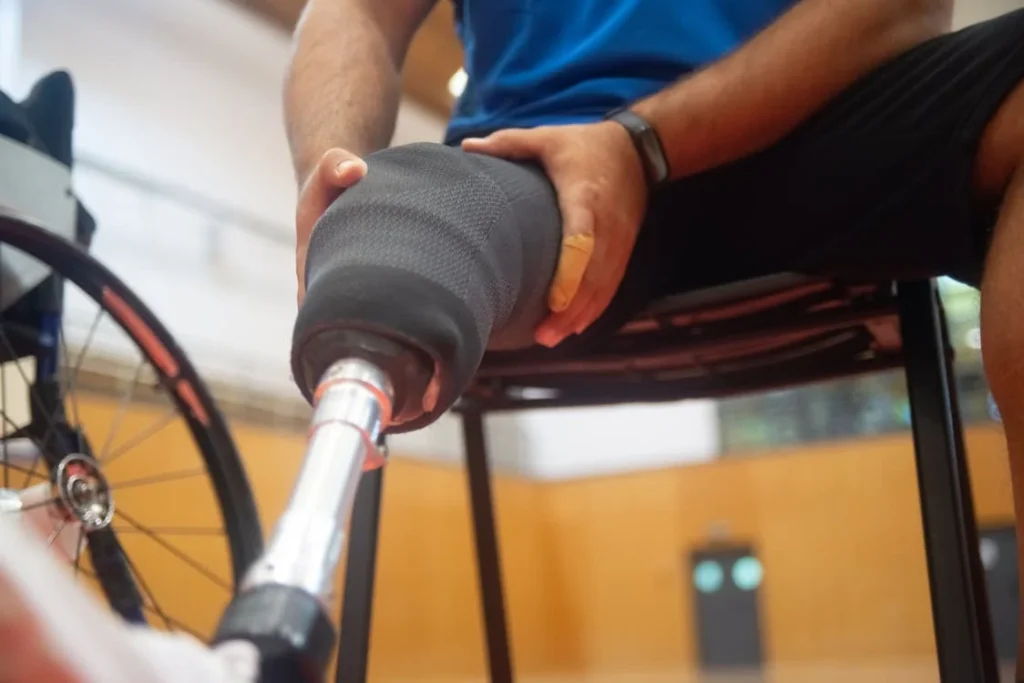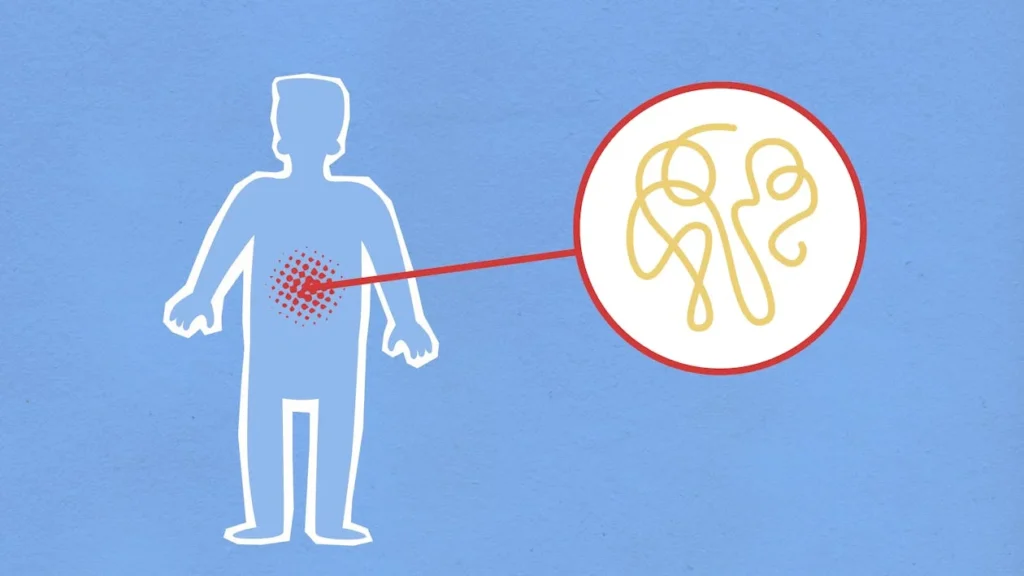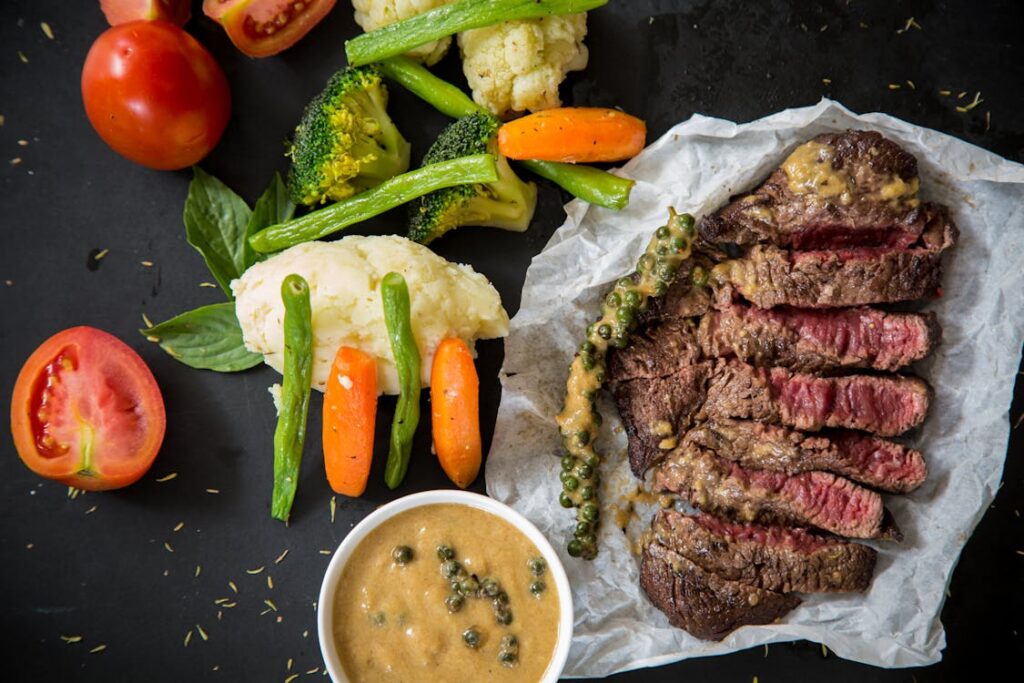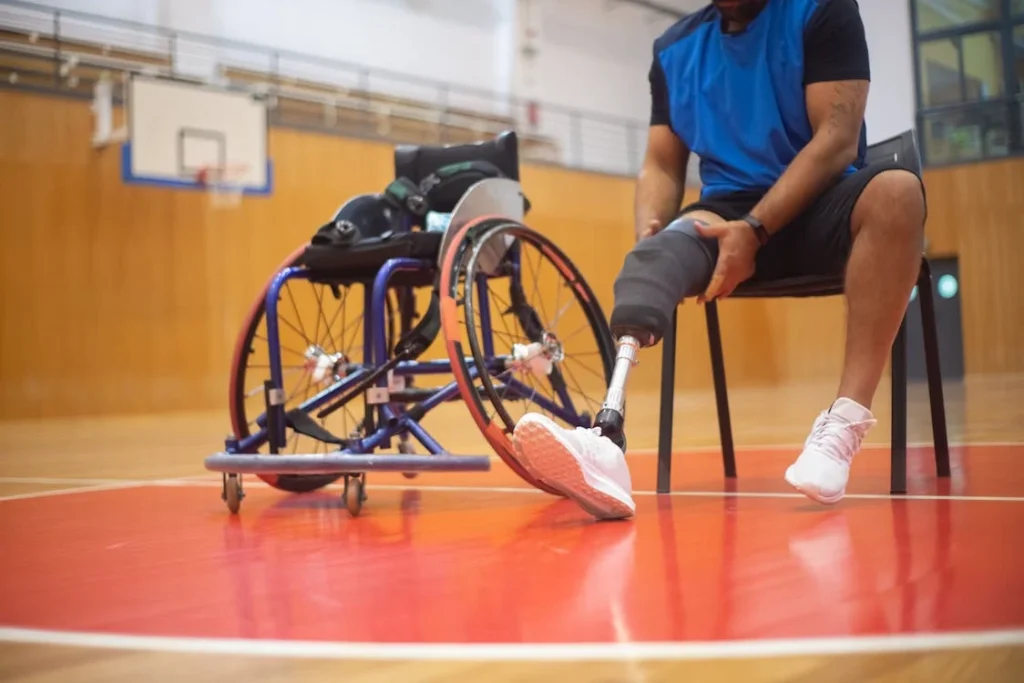Good circulation is essential for everyone, but for amputees, it is even more critical. The stump and remaining limbs rely on a healthy blood supply to heal, prevent infections, and stay comfortable when using a prosthetic. Poor circulation can lead to swelling, slow healing, and even pain, making daily activities more difficult.
Nutrition plays a powerful role in improving blood flow and keeping stump tissue healthy. The right foods can strengthen blood vessels, reduce inflammation, and promote faster healing. A well-balanced diet also helps prevent issues like blood clots and nerve pain, which are common concerns for amputees.

Why Circulation and Stump Health Matter for Amputees
Healthy circulation is what keeps the body functioning smoothly. It delivers oxygen and nutrients to tissues, removes waste products, and helps wounds heal faster.
For amputees, good blood flow is essential because the stump goes through constant changes, especially when using a prosthetic. Poor circulation can slow down healing, increase discomfort, and even lead to serious complications like infections or ulcers.
How Blood Flow Affects Stump Health
After an amputation, the body has to work harder to maintain balance, adapt to prosthetic use, and keep the stump in good condition.
Blood circulation plays a major role in all of these functions. If blood flow is restricted, the tissues in the stump may not receive enough oxygen, making them more vulnerable to irritation, swelling, and infections.
When circulation is poor, the stump may become cold, discolored, or feel numb. This happens because the small blood vessels in the area are not able to supply enough oxygen-rich blood.
Over time, poor circulation can cause the skin to break down, leading to pressure sores or slow-healing wounds. These problems not only cause discomfort but can also make it difficult to wear a prosthetic comfortably.
Common Causes of Poor Circulation in Amputees
Several factors can contribute to circulation problems after amputation. One of the most common causes is a sedentary lifestyle.
When a person moves less, blood does not flow as efficiently through the body, leading to sluggish circulation. Sitting for long periods, especially without stretching or changing positions, can cause blood to pool in the lower limbs, increasing swelling and discomfort.
Diabetes and vascular diseases also play a significant role in circulation problems. Many amputations are caused by complications from diabetes, which damages blood vessels over time.
High blood sugar levels can make arteries stiff and narrow, reducing blood flow to the stump and increasing the risk of infections.
Another major factor is inflammation. When the body is under stress, it produces inflammatory substances that can make blood vessels constrict.
This reduces circulation and makes it harder for wounds to heal. Amputees who experience frequent irritation, redness, or swelling in their stump may be dealing with chronic inflammation that is preventing proper blood flow.
The Link Between Nutrition and Circulation
The food we eat has a direct impact on how well blood flows through the body. Certain nutrients help relax blood vessels, improve oxygen delivery, and prevent blockages in arteries.
Others reduce inflammation, making it easier for the body to heal and function properly.
A diet high in processed foods, unhealthy fats, and excessive sugar can worsen circulation by causing inflammation and plaque buildup in blood vessels.
On the other hand, eating fresh, nutrient-rich foods can strengthen blood vessel walls, improve blood flow, and support overall stump health.
Proper nutrition also helps regulate blood pressure and cholesterol levels. High blood pressure can damage arteries, making it harder for blood to reach the stump.
Elevated cholesterol levels can lead to plaque formation in arteries, restricting circulation even further. By choosing the right foods, amputees can reduce these risks and keep their blood moving efficiently.

Foods That Improve Circulation and Stump Health
What you eat has a direct impact on your blood flow, healing ability, and overall comfort. A diet rich in the right nutrients can keep blood vessels healthy, reduce inflammation, and support tissue repair.
For amputees, these benefits are especially important because circulation problems can lead to pain, swelling, and slow wound healing. By making smart food choices, you can improve both circulation and stump health.
How Antioxidants Support Healthy Blood Flow
Antioxidants help protect blood vessels from damage and keep them flexible, allowing blood to flow freely. These powerful compounds reduce inflammation, prevent blockages, and promote better oxygen delivery to the stump.
Brightly colored fruits and vegetables such as berries, oranges, and bell peppers are excellent sources of antioxidants. Blueberries and pomegranates are particularly known for their ability to improve circulation.
Dark chocolate, in moderation, is another great source of antioxidants called flavonoids. These compounds help relax blood vessels, improving overall blood flow. Choosing high-quality dark chocolate with a high cocoa content and little added sugar is the best way to get these benefits.
The Importance of Iron for Oxygen Delivery
Iron is essential for producing hemoglobin, the protein in red blood cells that carries oxygen throughout the body. Without enough iron, blood circulation slows down, making it harder for oxygen to reach the stump.
This can lead to fatigue, slow healing, and cold sensations in the residual limb.
Foods like lean meats, eggs, spinach, lentils, and fortified cereals are rich in iron. Pairing these with vitamin C-rich foods, such as citrus fruits or tomatoes, enhances iron absorption, ensuring that the body gets the most out of each meal.
For vegetarians, sources like beans, tofu, and pumpkin seeds can help maintain adequate iron levels.
Healthy Fats Keep Blood Vessels Flexible
Not all fats are bad for circulation. In fact, healthy fats help keep blood vessels strong and flexible, making it easier for blood to reach all parts of the body.
Omega-3 fatty acids, found in fatty fish like salmon, sardines, and mackerel, are particularly effective at improving circulation and reducing inflammation.
For those who prefer plant-based sources, flaxseeds, walnuts, and chia seeds provide similar benefits. Avocados and olive oil are also excellent sources of heart-healthy fats that support smooth blood flow.
Including these in daily meals can help keep arteries clear and reduce the risk of blood clots.
Hydration and Blood Flow
Water plays a crucial role in circulation. When the body is dehydrated, blood thickens, making it harder for it to move through the vessels. This can lead to sluggish circulation, swelling, and discomfort in the stump.
Drinking enough water throughout the day keeps blood at the right consistency and helps flush out toxins that could slow down circulation.
In addition to plain water, herbal teas and fresh fruit-infused water can provide hydration along with added nutrients.
Green tea, for example, contains compounds that help improve circulation and support overall vascular health. Caffeine and alcohol, however, can contribute to dehydration, so they should be consumed in moderation.
Reducing Sodium for Less Swelling
Too much salt in the diet can cause the body to retain water, leading to swelling in the stump and remaining limbs. This can make wearing a prosthetic uncomfortable and reduce overall mobility.
Cutting back on processed foods, canned soups, and salty snacks can help prevent this issue. Instead, using herbs and spices for flavoring meals can enhance taste while keeping sodium levels low.
Fresh garlic is particularly beneficial, as it helps improve blood circulation and prevent artery hardening. Adding garlic to meals not only boosts flavor but also promotes better heart and vascular health.

How Poor Nutrition Can Harm Circulation and Stump Health
Just as the right foods can improve circulation and support stump health, the wrong foods can do the opposite. Unhealthy eating habits can slow blood flow, increase inflammation, and lead to complications that make life more difficult for amputees.
Understanding which foods and habits to avoid is just as important as knowing what to include in a healthy diet.
How Processed Foods Restrict Blood Flow
Highly processed foods, such as fast food, packaged snacks, and sugary drinks, often contain artificial preservatives, unhealthy fats, and excessive salt.
These ingredients can cause blood vessels to stiffen and narrow, making it harder for blood to circulate efficiently. Over time, restricted blood flow can lead to numbness, swelling, and an increased risk of infections in the stump area.
Trans fats, which are often found in fried foods and baked goods, are particularly harmful to circulation. They contribute to plaque buildup in arteries, reducing their flexibility and slowing down the delivery of oxygen-rich blood.
When circulation is poor, wound healing slows, making even minor cuts or irritation on the stump a bigger problem.
The Hidden Dangers of Excess Sugar
Eating too much sugar causes inflammation, which directly affects circulation and stump health. High blood sugar levels damage blood vessels, leading to poor circulation and an increased risk of nerve pain, a common issue for amputees.
Over time, this can result in a condition called neuropathy, where the nerves become less sensitive, making it harder to feel injuries or pressure sores on the stump.
Refined sugars, found in sodas, candy, and many processed foods, cause spikes in blood sugar levels, which then drop suddenly, leading to energy crashes.
These fluctuations put stress on the circulatory system and can contribute to long-term complications. Choosing natural sources of sweetness, such as fruits or honey in moderation, helps maintain steady blood sugar levels without harming circulation.
Alcohol and Its Impact on Blood Circulation
Alcohol can have both short-term and long-term effects on circulation. While an occasional drink may not cause harm, excessive alcohol consumption can dehydrate the body, thicken the blood, and lead to poor circulation.
Dehydration makes blood more sluggish, increasing the risk of swelling in the stump and remaining limbs.
Over time, alcohol can weaken blood vessels, making them more prone to damage and reducing their ability to deliver nutrients where they are needed most. It can also interfere with the body’s ability to absorb essential vitamins and minerals, such as B vitamins, which are necessary for nerve and blood vessel function.
Caffeine: Help or Harm?
Caffeine, found in coffee, tea, and energy drinks, can have mixed effects on circulation. In small amounts, caffeine can temporarily boost blood flow by expanding blood vessels.
However, excessive caffeine consumption can lead to dehydration and increased heart rate, which may negatively affect circulation in the long run.
For amputees who rely on caffeine for energy, it’s important to balance it with plenty of water and nutrient-rich foods.
Switching to lower-caffeine options, such as herbal teas, can provide a gentler boost without putting unnecessary stress on the circulatory system.
Balancing Diet for Long-Term Health
While avoiding unhealthy foods is important, completely cutting out certain food groups can also be harmful.
Extreme diets that eliminate entire nutrient sources can lead to deficiencies, affecting circulation and overall well-being.
Finding a balance that includes a variety of whole foods while minimizing processed and inflammatory ingredients is the key to maintaining good circulation and a healthy stump.

Lifestyle Habits That Support Better Circulation and Stump Health
While nutrition plays a major role in improving circulation and keeping the stump healthy, lifestyle habits also make a significant impact. Daily routines, movement, and even stress levels influence how well blood flows through the body.
Amputees who take an active approach to their health by combining good nutrition with positive lifestyle choices can experience better mobility, faster healing, and greater comfort.
The Power of Movement in Improving Circulation
Staying physically active is one of the best ways to keep blood flowing efficiently. When the body moves, muscles contract and help push blood through the veins, reducing the risk of swelling and stiffness.
For amputees, regular movement is crucial to prevent blood from pooling in the lower limbs and to keep the stump tissue oxygenated.
Even simple movements, such as shifting positions frequently, stretching, or performing seated leg exercises, can help improve circulation. For those using a prosthetic, walking with proper posture encourages steady blood flow and reduces pressure on the residual limb.
Physical therapy can also be beneficial in developing a customized exercise plan that strengthens muscles while enhancing circulation.
For amputees who experience swelling in the stump, elevating the limb for short periods throughout the day can help reduce fluid buildup. Wearing compression garments, if recommended by a doctor, can also support circulation and prevent discomfort.
How Stress Affects Circulation and Healing
Chronic stress can have a negative effect on circulation and overall health. When the body is under stress, it produces higher levels of cortisol, a hormone that constricts blood vessels and slows healing.
For amputees, this can make it harder for the stump to recover from minor irritation, increase the risk of infections, and lead to poor blood flow in the remaining limbs.
Relaxation techniques such as deep breathing, meditation, or gentle yoga can help lower stress levels and improve circulation.
Taking time to engage in enjoyable activities, staying connected with supportive friends and family, and seeking professional counseling if needed can also reduce stress-related complications.
The Importance of Quality Sleep
Sleep is when the body repairs itself, including blood vessels and skin tissue. Poor sleep can lead to increased inflammation, sluggish circulation, and a higher risk of complications such as delayed wound healing.
Amputees who experience discomfort at night should experiment with different sleeping positions to reduce pressure on the stump. A supportive mattress and properly fitted prosthetic liners during the day can also help minimize nighttime discomfort.
Avoiding heavy meals, caffeine, and screen exposure before bed can improve sleep quality, helping the body regenerate and maintain strong circulation.
Creating a bedtime routine that includes relaxation techniques, such as listening to calming music or reading, can promote better rest and support overall health.
The Role of Temperature Regulation
Blood vessels respond to temperature changes, expanding in warmth and contracting in cold conditions. Amputees may notice that their stump feels colder than the rest of their body due to reduced blood flow in the area.
Keeping warm, especially in cooler weather, can help maintain good circulation and prevent discomfort.
Dressing appropriately, using warm compresses, and staying active indoors during cold weather can help keep blood moving. However, excessive heat can lead to sweating and irritation in the prosthetic socket, so maintaining a comfortable balance is important.
Staying hydrated and wearing breathable clothing can help regulate body temperature effectively.
Hydration and Circulatory Health
Drinking enough water is one of the simplest yet most effective ways to keep circulation strong. Dehydration causes blood to thicken, making it harder to move through the body efficiently. This can lead to sluggish circulation, increased swelling, and reduced oxygen delivery to the stump.
For those who struggle to drink enough water, adding natural flavors such as lemon, cucumber, or berries can make hydration more enjoyable.
Herbal teas and coconut water are also excellent choices for maintaining fluid balance while providing additional nutrients that support circulation.

The Connection Between Gut Health and Circulation
Most people don’t realize that the health of their gut plays a direct role in blood circulation and stump healing. The digestive system is responsible for breaking down food and absorbing essential nutrients that keep blood vessels strong and blood flow steady.
If the gut isn’t functioning properly, nutrient absorption can be compromised, leading to poor circulation, slower healing, and increased inflammation.
How a Healthy Gut Supports Better Blood Flow
The gut contains trillions of bacteria that help digest food, regulate the immune system, and control inflammation. When these bacteria are balanced, they support proper digestion and help the body absorb key nutrients like iron, vitamin C, and omega-3 fatty acids, all of which contribute to strong circulation.
However, an unhealthy gut can lead to bloating, sluggish digestion, and nutrient deficiencies, which can negatively impact blood flow and stump health.
Chronic gut issues, such as indigestion, constipation, or acid reflux, can be signs that the digestive system isn’t working as efficiently as it should.
This can prevent the body from absorbing circulation-boosting nutrients, leading to increased fatigue, slower wound healing, and difficulty regulating blood pressure. For amputees, ensuring that the gut is functioning properly is essential for maintaining energy levels and preventing complications.
Foods That Improve Gut Health and Circulation
Eating fiber-rich foods is one of the best ways to support digestion and promote better circulation. Fiber helps regulate blood sugar levels, reduce cholesterol buildup in the arteries, and encourage the growth of beneficial gut bacteria.
Whole grains, legumes, and fresh vegetables are excellent sources of fiber that support both gut health and cardiovascular function.
Fermented foods, such as yogurt, kefir, sauerkraut, and kimchi, introduce healthy bacteria into the digestive system. These probiotics help strengthen the gut lining, improve nutrient absorption, and reduce inflammation throughout the body.
A strong gut lining also prevents harmful substances from leaking into the bloodstream, which can trigger immune responses that restrict circulation.
Hydration also plays a key role in digestion. Drinking enough water helps move food through the intestines, preventing bloating and constipation, which can put unnecessary stress on the body.
When digestion is smooth, the body can efficiently extract nutrients that improve circulation and support healing in the stump.
The Impact of Inflammation on Circulation and Gut Health
Inflammation is a natural immune response, but when it becomes chronic, it can damage blood vessels and interfere with proper digestion.
Processed foods, excessive sugar, and unhealthy fats contribute to inflammation, making blood vessels stiff and reducing their ability to transport oxygen efficiently. At the same time, these foods can irritate the gut lining, leading to poor digestion and decreased nutrient absorption.
For amputees, reducing inflammation is essential for maintaining circulation and preventing complications like skin breakdown or excessive swelling.
Anti-inflammatory foods such as turmeric, ginger, and leafy greens help calm the body’s immune response and promote better digestion. When inflammation is controlled, blood flows more freely, and the stump remains healthier and more resilient.
The Gut-Brain Connection and Stress Management
The gut and brain are closely connected through the nervous system. When stress levels are high, the digestive system slows down, leading to bloating, stomach discomfort, and poor nutrient absorption.
This can have a domino effect on circulation, as the body struggles to deliver oxygen and essential vitamins to the stump and remaining limbs.
Practicing stress management techniques, such as mindfulness and deep breathing, can help keep the gut working efficiently. When digestion is smooth, the body can focus on healing, circulation improves, and the risk of complications decreases.

The Role of Protein in Stump Healing and Circulation
Protein is often associated with muscle growth, but it also plays a vital role in circulation and wound healing. For amputees, getting enough protein is essential for maintaining skin integrity, repairing tissues, and ensuring that blood flows smoothly to the stump.
Without adequate protein, the body struggles to generate new cells, leading to delayed healing, weakened blood vessels, and an increased risk of pressure sores.
How Protein Supports Circulation
Proteins are made up of amino acids, which help build and repair blood vessels. Healthy blood vessels are flexible and strong, allowing oxygen and nutrients to travel efficiently throughout the body.
When protein intake is low, blood vessels can become fragile, leading to sluggish circulation and reduced oxygen supply to the stump. This can make the area more prone to irritation, infections, and slower recovery from minor injuries.
In addition to strengthening blood vessels, protein also helps regulate fluid balance. Amputees who experience swelling in the stump may benefit from increasing their protein intake, as it helps prevent excessive fluid buildup.
This is especially important for those using a prosthetic, as swelling can make the socket fit uncomfortably and increase pressure on the skin.
Best Sources of Protein for Circulatory Health
Lean meats, fish, eggs, and dairy products provide high-quality protein that supports circulation and tissue repair. Fish like salmon and tuna offer the added benefit of omega-3 fatty acids, which help keep blood vessels clear and reduce inflammation.
For those following a plant-based diet, protein can be found in lentils, beans, quinoa, and nuts. These sources provide essential amino acids while also delivering fiber and antioxidants that further support circulation.
Soy-based products like tofu and tempeh are excellent options, as they contain high-quality protein without the saturated fats found in some animal products.
Collagen is another important protein that supports skin elasticity and wound healing. Bone broth, chicken skin, and certain supplements can help provide the body with the building blocks needed to maintain healthy skin around the stump.
When collagen levels are adequate, the risk of developing pressure sores or skin irritation is significantly lower.
Protein Timing for Faster Healing
When and how protein is consumed can impact its effectiveness. Spacing protein intake evenly throughout the day allows the body to use it more efficiently for repair and recovery.
Instead of having one large protein-heavy meal, amputees can benefit from including protein in every meal and snack. This ensures a steady supply of amino acids, which helps with continuous tissue regeneration and circulation support.
Combining protein with other essential nutrients, such as vitamin C and iron, enhances its effectiveness. For example, pairing lean meat with citrus fruits or bell peppers can improve iron absorption, which in turn increases oxygen delivery to the stump.
Similarly, adding protein to a meal with healthy fats, like avocado or nuts, can provide sustained energy and support overall cardiovascular health.
The Connection Between Protein Deficiency and Fatigue
Amputees who don’t get enough protein may notice symptoms like fatigue, slow healing wounds, and muscle weakness. These signs indicate that the body isn’t receiving enough nutrients to maintain strong circulation and tissue health.
Over time, a lack of protein can also contribute to muscle loss, making it harder to stay active and use a prosthetic comfortably.
Conclusion
Good circulation and stump health are essential for amputees to stay active, heal properly, and avoid complications. Nutrition plays a crucial role in ensuring that blood flows smoothly and that the stump remains strong and resilient. Eating a diet rich in antioxidants, healthy fats, iron, and protein supports blood vessel health, reduces inflammation, and speeds up tissue repair.
Avoiding processed foods, excessive sugar, and unhealthy fats helps prevent circulation problems that can lead to swelling, slow healing, and discomfort. Staying hydrated, managing stress, and maintaining an active lifestyle further enhance blood flow and overall well-being. Small, consistent dietary changes can make a big difference in mobility and long-term health.
At Robobionics, we are committed to empowering amputees with high-quality prosthetics and expert guidance to improve daily life. If you’re looking for a comfortable, reliable prosthetic solution, book a free demo of Grippy™ today and experience the difference. For more tips on maintaining stump health and mobility, contact us for personalized support and expert advice.



